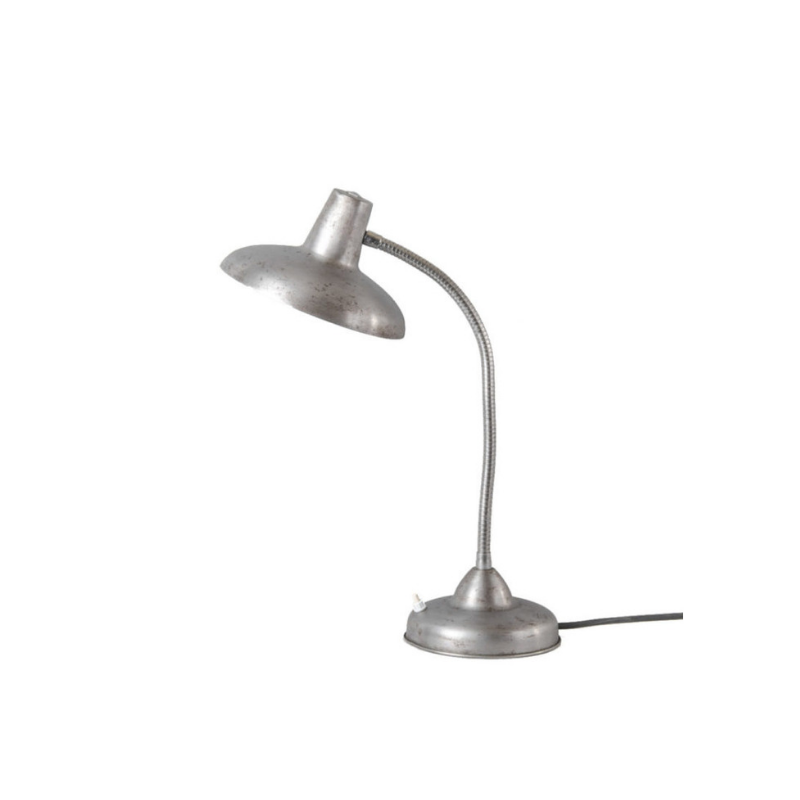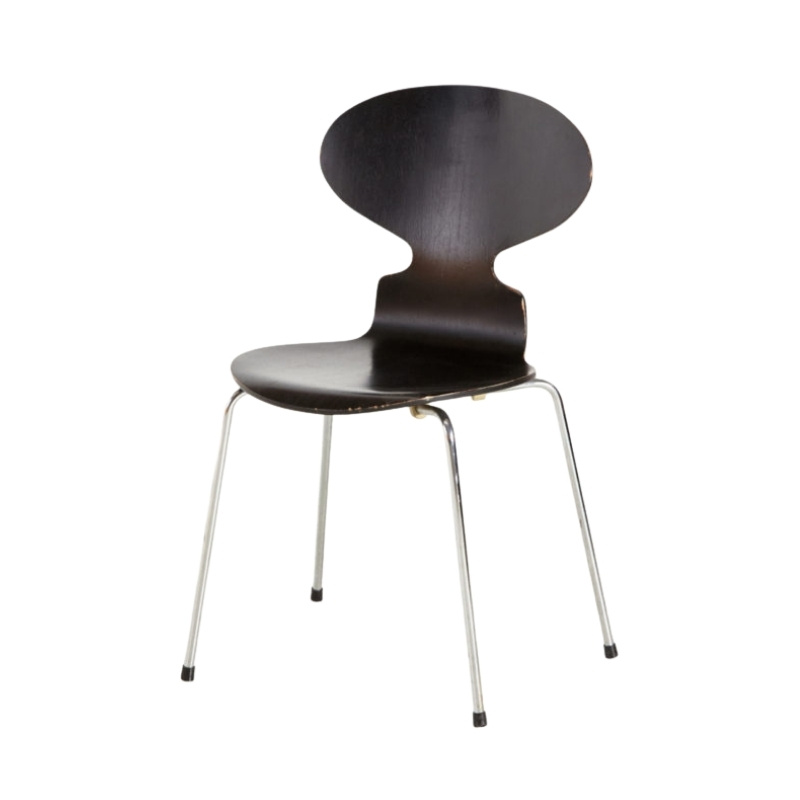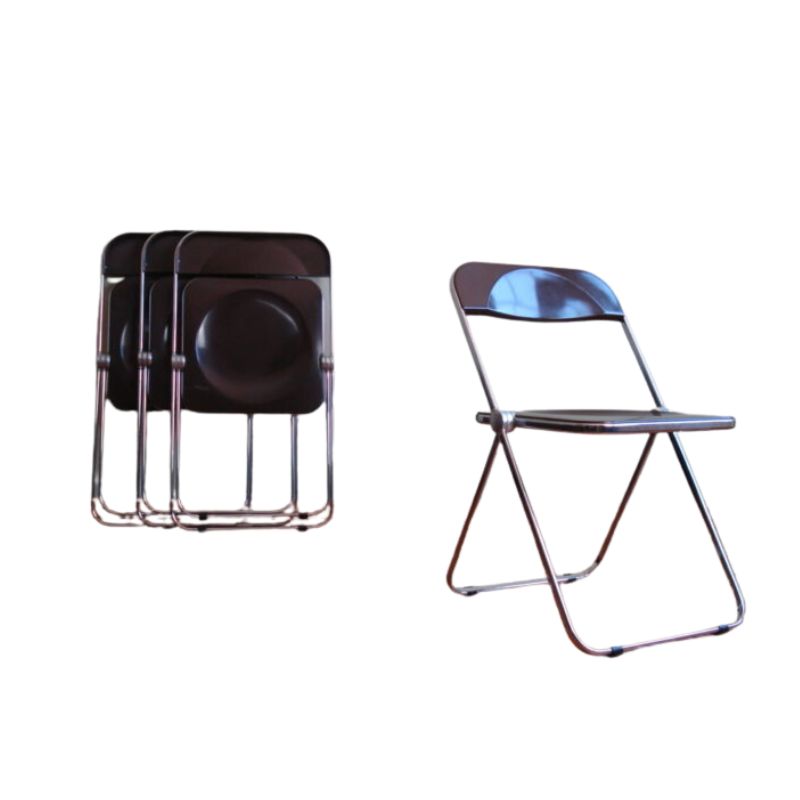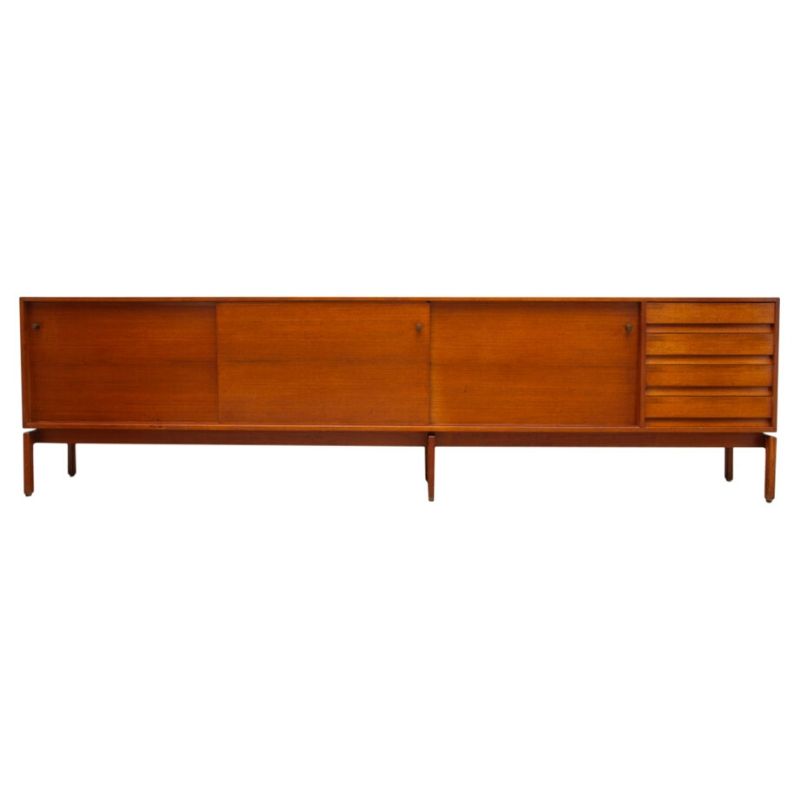Comments on this book?
I am nearly finished with it and I have to say Wolfe's views on modernism is very intriguing. The whole of it is infused with a kind of stuffy sarcasm towards modernism, but it really helps me to see the falacies of it all. For most of my modernist-loving life I have viewed modernism as the savior of culture and had assumed it to be born exclusively with optimism and humanity.
This book tells a different tale. It describes a kind of backwards revolution against the bourgeoisie ? viewed as stuffy and arrogant. By description they fight fire with fire ? with stuffiness and arrogance.
If this book is true to the word, then I can see where modernism was bound to fail ? only to peek its head in and out of popular culture from time to time. It acted as another, albeit completely different with mindset and aesthetic, bourgeoisie way of life.
I can only blame my years of being completely enamoured with the midcentury for my lack of understanding about this modernism's (or international style) birth ... Basically nearly likeminded schools of thought quarreling over issues like the various denominations of Christianity.
That being said ? it makes me wonder if it would have been different if these rules were never placed on our heroic designers of the time. What if everyone viewed modernism the way Saarinen did? (A valuable tool and set of ethics that can be successfully used with individual statement, originality, and vision).
Those designers like Saarinen and Edward Durrel Stone were out of favor with the other designers true to the word. Today they are all mushed together and we call them all modern. Back then the designers with individual vision were considered to have turned their back on their modernist ethics by others (not necessarily the public).
Don't get me wrong. I love a glass box. I find it strange that designers of the time were put in a choke hold to follow the ultimate vision of other more prominent designers. I am grateful to all of them ... those who followed and those who left. But what if Alexander Girard never had the guts to follow his design intuition ... or Charles Eames ... or Buckminster Fuller .... you get the idea.
Comments?
On Wolfe and his book...Pt. 1
I'm glad you read Tom Wolfe's book, because it is always good to get your assumptions knocked out from under you occassionally, so you have to reaffirm what you really know and think.
Having said that, I think Wolfe's book is a critique of a narrow strain of modernism that ultimately had a lot of impact on ordinary Americans lives--an impact that was often times part of a broader societal process that was often not very good or pleasant for Americans--intense scalar increases in all forms of organization, a rising sense of individual powerlessness amidst the bigness, and a rising tendency for intellectuals and policy wonks to make policy rather than elected officials to do same from a rather more bottom-up expression of need through localized democratic and localized good old boy feedback. Put simply, the 20th Century was largely about the dwarfing of the individual and family in the face of globalization of politics, finance, manufacturing and war. All professions that made use of the new technologies of that century got swept up in the process. Wolfe could have written a similar book about law, about medicine, about engineering, about the military, about politics, and so on. All of these activities embraced new technologies and the vastly larger scales of organization that they facilitated and in turn induced a tremendous sense of ever creeping dislocation and alienation in ordinary persons lives, while also doing a lot of good along the way, too. Many of us are living longer, with more control over disease. Many of us are better nourished. Many of us did get liberated from fascist dictators. Many of us have benefitted from rising global trade creating certain kinds of economies that allow us to consume more needed things, not just frivolous things. But there just is no escaping that alot of good things and continuities with the past were crushed in the process of 20th century technological progress, institutional reorganization, and war. And there just was considerable asymmetry in who got the benefits.
Wolfe Pt.2
But you really wouldn't understand the complexities of tradeoffs from reading Wolfe's book. His is an effective, well written polemic against a narrow strain of modernist architecture. He is writing against the strain that involved a lot of European designers who cast their lots at one time with fascism and things anti-democratic. He is criticising a group of designers ranging from Corbusier to those from the Bauhaus, who formed an avant garde in order to accomplish the change in design that they sought. He is criticising the idea of designers, who couldn't get work in the mainstream, forming a clique and then embracing fascism to get work in fascist societies, and then later corporate managerialism, to get work in corporatist societies, then eventually prevailing with a philosophy that said the purity of their abstract form language was more important than making and building things that fit in and created harmony with surroundings. He is criticising the willingness of modernist designers to superimpose their sense of what ordinary persons' need over and above what those persons may want. He is criticising an elitism that could produce socialist worker housing (Corbu's dormitories) for one society where they were only marginally fitting to the sensibilities and circumstances at hand, and then drop them lock stock and barrell into an American landscape with a completely different political, social and economic and urban ecology. (Note: by inference Wolfe would probably blame Cabrini Greens in Chicago on its architecture rather than on the politics of racism and machine government that lead to an absurd concentration of unemployed poor persons in European worker housing dorms to marginalize the black vote in Chicago). And he was criticising the tendency of these buildings and their purified form languages to wipe out visual cues, porch stoops, human scale, and variety that were key to making neighborhoods feel human, understandable, and secure.
Wolfe pt. 3
All of the above he was saying. And he was tying modernism into the sickness of fascism. And the environments he points to were rather inhuman. Many modernist designers would no doubt agree with him. But he never really got into the idea that politics and corrupt construction contracting and not design drove urban renewal and many of the most dehumanizing urban discontinuities he attributed to modernism.
You see polemicists oversimplify, because they are not looking for the truth. Rather, they are looking to make their point, which is okay. There's room for both inquiries into truth and polemics. But you the reader have to know the difference, so you don't let a polemicist wreck your day by using an oversimplified argument to make you feel you've dedicated yourself to an evil -ism. In his case it was: Bauhaus modernism and a part of its lineal descendants created alot alienating glass boxes, wrecked alot of neighborhoods by breaking alot of urban continuities and created a lot of uncomfortable furniture. Bad modernism, bad, bad, bad, bad, Wolfe said like a scornful minister of all that is good and traditional.
But Wolfe doesn't deal with the fact that there were lots of different strains of modernism. He almost completely ignores the magical fusion of the crafts movement and Bauhaus modernism at Cranbrook that produced some of the most beloved American design of the century. He doesn't say that an Eames easy chair and ottoman are actually some of the best looking, most comfortable seating ever created. He doesn't even explore Danish Modern and Hans Wegner, et al. How could even he not like an Ox Chair? He doesn't mention how much writers have loved typing on modernist designed portable typewriters. You can be absolutely sure that Wolfe used one at one time or other. Hey, do you think he ever used an IBM Selectric?
One could go on and on here. But you get the point. He also probably used modernist coffee pots and dishes. He probably used modernist pens and liked them just fine. He probably used and liked all kinds of modernist things, but just excluded them from his book, because they did not help flesh out his polemic against glass boxes in Manhattan. I can't recall, but the type face to his book and the jacket design were probably by-products of modernism, or its descendant, post modernism, which bugged him, too. Fine, post modernism bugged modernists more than it ever bothered Tom Wolfe.
Wolfe Pt 4
Wolfe didn't like a city full of Mies glass boxes. Or perhaps more precisely, he did not like a city full of imitations of Mies boxes. He found inverted massing and exposed skeleton and Corbusian brutalism ugly. So: okay. What form language in history can one point to that did not produce ugly buildings as well as beautiful ones? I've been to Florence. There are some real turkeys there. I've lived in San Francisco and not all the Victorians were quaint. I've been to Wolfe's south and not all ante bellum slave master's plantation houses were beautiful and dignified. But what about Falling Water, Tom? What about Saarinen's buildings? What about Columbus, Indiana? Its a beautiful blending of old and new.
Still, despite the simplistic argument he made, Wolfe did a service to modernist design by calling attention to some of its too sterile, to alienating aspects. Modernist design, even the best intended of it, was rather tightly focused on finding a new form language for the 20th Century technologies available for building and manufacturing. As we've said here before, Louis Sullivan's functionalist philosophy, which paid attention to both form language and ornamental language, was essentially eclipsed by a modernist philosophy that sought to simplify even more, for awhile, in order to get the form language right, before moving on to a reintegration of ornamentation and other issues. Well, what the heck is evil about that? Noone forced either Dictators or democrats to build modernist structures. People liked the idea of them, at least, or they wouldn't have commissioned them. But clearly modernism needed to do and be more than it was.
But perhaps the best thing Wolfe did for modernist design he did unintentionally. By really hooting and deriding post modernism (which he blamed on modernism, of course), he actually exposed alot of it for the crap that it was and actually laid the groundwork in a way for today's rebirth of neomodernism.
I think we all understand here, particularly after some of Koen's more penetrating insights, that neomodernism is not going to cut it for long, because it really lacks, so far anyway, a strong philosophical underpinning that can see it through a rational integration of both the emerging technologies of our time and the emerging and/or persistent problems of our time needing design solutions.
Nevertheless, at least we are back at trying to take rational form languages forward again. We are ready for an emerging body of thought to integrate into a coherent philosophy that can animate our use of new technologies and the ways in which we choose to design our way out of the messes that society is currently making.
Wolfe Pt 5
As a post script on Wolfe: one might argue that he was the prototypical post modern new journalist. His was a modern prose ornamented and ironically self conscious. He was one of a core group of journalists who innovated "the new journalism" of the 60s; that journalism reintroduced subjectivism to journalistic writing. It said journalistic writing should not just be the five w's of objective reporting, but it should be subjective, told often with a fiction-like form of beginning, middle and end, and with mythical frameworks to hold it together as fiction used. In short, he wrote ornatmented, subjective journalism constructed more like fiction than traditional news writing. Now is it clear to you why he disliked modernism? It is to me. But what is not so clear is why he disliked post modernism, too. Perhaps he was too close to postmodernism to understand he was one himself. Or perhaps, again, he was writing a polemic, and it just didn't fit in to discuss that; that was one of the beauties of the new journalism--you could use subjectivity to rationalize leaving out alot of things. It was no doubt very expedient for meeting deadlines. But let's not be mean to Tom Wolfe. Wolfe wrote some entertaining things. The Electric Kool Aid Acid Test is one of the great subjective examples of a new journalism polemic blown to book length wherein the 60s counterculture is at once mythologized for fun and book sales AND pronounced a moral and cultural dead end. His novels are pretty awful, though, but then so are most journalists' novels pretty uninspired--there are it seems relatively few Hemingways among the ink stained wretches. Tom Wolfe had an eye for current events that could be described amusingly and sell as commentaries on contemporary life. And they were good for what they were. But a rigous thinker about anything that I know of he was not.
I would not let Tom Wolfe deter you from modernist design, if you have diligently studied and done your best to understand and make use of it. Almost by definition you know more about it than a journalist who read a few books, did some interviews and saw a market niche for an anti-modernist polemic on the book shelves once along time ago. I can assure you that he's moved on from and so should you.
But again, if he woke you up to some of modernism's less savory fascist roots, then I say bully for you and him. We don't need any more fascism in my opinion. It was bad in modernism's early days and its bad in its present, increasingly virulent form. No discipline has been the better for associating with it IMHO.
Wolfe Pt. 6
One last point: I am talking about Tom Wolfe's book from memory. And it has been a long, long time since I have read it. At the time of its publication, it spoke rather clearly to me. But time and more reading and more thought about modernism and about society and the way cities are built and the way architecture is conceived and executed, has made me come to think of his book in the way I have described above.
I like Tom Wolfe's nonfiction books. I enjoy his prose. It may be that I am remembering his arguments and what he included and excluded from his argument with insufficient accuracy. The book was published along time ago and I have not reread it since then. I would recommend it to anyone, despite the caveates about it that I have noted. American journalism would have been much the poorer had Mr. Wolfe not given it a go.
very nice
Thank you for your words. I feel very similar regarding his theories as you do, only I really took alot of it to heart at first. Although I would not have turned my back on a movement that has given my life invaluable pleasure (I would know that it works for me regardless if it works for others), it did make me stop and think.
I have around 40 pages to go, and I only assumed that Cranbrook would emerge in his writing somewhere. I, like you, am rather suprised by it's absense. I just got finished with the section that is largely on Saarinen and I thought Cranbrook would be the natural topic to explore next. The absense of Danish Modern is also strange ... except if you consider that teh book is titled with "Bauhaus." I would expect Cranbrook at least since it is the humanitarian offspring of the Bauhaus IMHO.
Perhaps, like I said before, my general focus has been on the Cranbrook years of design. The Bauhaus has always interested me, but I can say that even with no deep understanding of it it is quite austere and inhuman at first (and last) glance. Of course I love to read about it and admire the buildings and designs, but in the long run the Cranbrook era makes more sense to study. It is more realistic for contemporary life. To me, the Bauhaus was never completely fit for contemporary life then or now. Cranbrook, with the exception of technological advance, is just as suitable today as it ever was ... which is, to me, the real heart of modernism. Timelessness.
I took no offense to his writing. It takes someone like that to point to the elephant in the room. We have all thought it at one time or another - boy that is an admirable design but what a pain to live with. I have cursed myself with uncomfortable options in the past for the sake of beauty. As you go on, and hoepfully get smarter, you find your strain of modernism that suits your personal needs. It's good to hear, almost freeing - modernist designers do often have a tendency to disregard the client. But all of this disregard in the past isn't for naught. Is it just me, or is modernism proving to be more client driven than ever?
.
Bauhaus > Gropius, Breuer, et al > Harvard = "cool, rational"
Scandinavia > Saarinen pere et fils > Cranbrook = "warm, intuitive"
sidelight: Germany > Mies > Chicago = "pure, idealized"
To make his point, Wolfe more or less had to ignore category 2 above. The whole truth is broader and more random than what fits into any one clearly defined argument. Still, as stated, Wolfe's thesis was useful.
dcwilson said it so well...
...that I have few things to say...
Just a few minor comments.
"...Cranbrook at least since it is the humanitarian offspring of the Bauhaus..."
Historically this in not correct. There is no direct link between the Bauhaus tradition and the Cranbrook tradition. I have mentioned this before but the historical link is prior to the foundation of the Bauhaus. In general terms, the German Werkbund united at the congres of 1914 was immidiately split into two groups. On one hand Hermann Muthesius and on the other Henry Van De Velde and his followers.(Obrist,Endell,Osthaus,Bruno Taut and Breuer (not the one we know).
Strangely enough Muthesius, the fervent nationalist pleaded for an almost excusif rational developement of the "new" style...to re-enforce the German economy. Whereas the Internationalist Van De Velde pleaded for relying in the individual artistic and crative abilities of architects and designers to define the "new" style. Although Van De Velde had founded the Kuntgewerbeschule Weimar and would recommend Gropius as his successor,(who subsequently merged the two Weimar schools and renamed them the Bauhaus). The Bauhaus became de facto a strong supporter of the Muthesius proposals...which basically turned the page on Van De Velde's influence and legacy in Germany.He returned to Belgium and founded the "La Cambre" school, a school that is still very close to Van De Velde's ideas but never became as influential as the Bauhaus. But prior to that his ideas had reached Finland through another Belgian, Alfred W.Finch who was not only influencial in Finland, he also was Maija Grotell's teacher at the Atheneum in Helsinki . Maija Grotell's early art deco pieces clearly show that influence. Ray Eames more than Charles (my own impression) has mentioned many times how deeply the influence of Grotell was in Cranbrook, not only within her own field of ceramics (she was also a talented weaver and painter) but on the specific vision of Cranbrook.
cont.
Although both Van De Velde and Alfred Finch were at one point members of the group of XX (twenty) the details about their relationship is not well documented but there is so much common ground in their teaching that it is difficult to ignore the link. By the time Bertoia, Eames, Sarainnen jr. etc were at Cranbrook, they knew of course about the Bauhaus, but they certainly worked in another tradition. So these are clearly two infuential yet different directions. It deserves more study but it is my impression that even the Bauhaus tradition in the U.S. should be split between Albers at Black Mountain College, Gropius and Breuer at MIT and Moholy Nagy and Van der Rohe in Chicago...
Generally spoken, I do not think that Tom Wolfe's biggest mistake was to put all modernism in one basket. Of course it is unfortunate that the U.S. embraced the Bauhaus "refugees" with so much enthusiasm that it forgot Cranbrook and even more so the Norman Bel Geddes, Henri Dreyfuss, Raymond Loewy tradition. But the larger mistake was this strange over simplification that "because they fled nazi Germany, we will automatically consider them nati-autoritarian. Of course Gropius, Van Der Rohe, Breuer etc. were, as much as those who stayed in Europe like Le Corbusier, products of
a autoritarian and elitist society in which social and cultural leadership was more important that the will of the people and the free flow of ideas amoung creative people. So I agree with the comment that:".....in the long run the Cranbrook era makes more sense to study. It is more realistic for contemporary life... Cranbrook, with the exception of technological advance, is just as suitable today as it ever was ..."
thanks koen
This is why I love this website BTW. I have no problem obtaining more correct information. Very nice!
I would like to add that perhaps I wasn't clear in my statement regarding Cranbrook being the more humanitarian version of the Bauhaus. I did not mean to suggest there was a literal connection. And I was speaking more about the Eameses than anyone else - I was making a loose connection between the use of glass boxes etc. between people like Mies and Eames. The Eames House for example had every opportunity to be lifeless and austere, but in breaking rules of the international style he employed the use of color on the exterior and was not afraid to make use of folk art and other objects not seemingly modern in their interior. Very loose - I know. But that is what I meant by a more humanitarian aspect. Thanks!
If you need any help, please contact us at – info@designaddict.com









